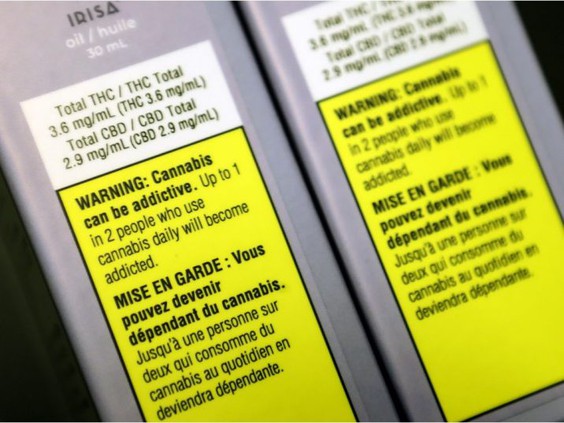You are here
Home 🌿 Recreational Marijuana News 🌿 ‘Misleading’ THC and CBD labelling practices prompts letter from Health Canada 🌿‘Misleading’ THC and CBD labelling practices prompts letter from Health Canada

Health Canada reminds producers that displaying THC and CBD values that “have not been obtained as a result of cannabinoid testing on each lot or batch of cannabis” may result in non-compliance.
In March, Mandesh Dosanjh, president and CEO of Pure Sunfarms, wrote a blog post on LinkedIn calling out discrepancies in potency labelling practices among Canadian cannabis companies.
Specifically, Dosanjh wrote that some companies were taking a “static” approach to labelling THC and CBD values, where “one potency label is pre-printed and applied across many batches which fall within a pre-determined range to save on costs.”
“We believe this approach to labelling misleads consumers by creating a false impression about the potency of their dried flower,” he noted.
In a letter obtained by The GrowthOp, Health Canada is now reminding licence-holders that “the THC and CBD content values displayed on a dried cannabis product label should reflect the value as tested for the lot.”
In the letter, which was sent industry-wide, Health Canada states that “labelling practices in which the THC and CBD values displayed on the label of a cannabis product […] that have not been obtained as a result of cannabinoid testing on each lot or batch of cannabis, may result in non-compliance.”
Health Canada further writes that labels derived from “historical cultivar-based results or other practices, do not correspond to an accurate measurement of a specific lot’s THC and CBD content values, and may not correspond to the amounts the cannabis product could yield.”
Dosanjh, who first contacted Health Canada about this issue last December, said he’s happy with what the letter states, but would like to see more information about the potential impact of non-compliance moving forward.
The letter “was very clear on what you can and cannot do and how you should be labelling,” he said.
Dosanjh added that the discrepancies in labelling practices could amount to millions of dollars in savings and revenue for producers who were taking a static approach.
“What I believe certain producers are trying to do is indicate to consumers that the product they were buying was at a higher potency by using an average,” Dosanjh argued. “As a result, I think they probably saved millions of dollars if they were a large producer.”
In February, Pure Sunfarms submitted a complaint about the practice to Health Canada.
According to Bloomberg, which obtained a copy of the complaint, it notes that 18 separate batches of products sold under Canopy Growth’s TWD brand were labelled at 20 per cent THC, and the “statistical likelihood of this many lots coming back with identical test result potencies of precisely 20.0 per cent is extremely low.”
Health Canada also made clear in the letter that “cannabinoid contents can be reasonably rounded and remain compliant with the labelling requirements.” Additionally, the letter states it is acceptable “to use the less-than sign (<) when dealing with quantities of cannabinoids that are less than 0.1 mg or are based on the analytical method’s limitation.”
Health Canada does not recommend labelling products as containing ‘0’ THC or CBD “unless it can be demonstrated with assurance that the product does not contain the relevant cannabinoid.”
“I think that it was all about transparency and doing the right thing for consumers so they can continue to have trust in the industry,” said Dosanjh. “And I absolutely believe that consumers will see this as a sign that certain organizations like Pure Sunfarms want to stand up for the consumer and do the right thing and not prioritize profits over transparency.”
420 Intel is Your Source for Marijuana News
420 Intel Canada is your leading news source for the Canadian cannabis industry. Get the latest updates on Canadian cannabis stocks and developments on how Canada continues to be a major player in the worldwide recreational and medical cannabis industry.
420 Intel Canada is the Canadian Industry news outlet that will keep you updated on how these Canadian developments in recreational and medical marijuana will impact the country and the world. Our commitment is to bring you the most important cannabis news stories from across Canada every day of the week.
Marijuana industry news is a constant endeavor with new developments each day. For marijuana news across the True North, 420 Intel Canada promises to bring you quality, Canadian, cannabis industry news.
You can get 420 Intel news delivered directly to your inbox by signing up for our daily marijuana news, ensuring you’re always kept up to date on the ever-changing cannabis industry. To stay even better informed about marijuana legalization news follow us on Twitter, Facebook and LinkedIn.




